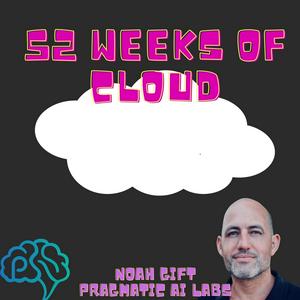The Toyota Way: Engineering Discipline in the Era of Dangerous Dilettantes
Dangerous Dilettantes vs. Toyota Way EngineeringCore ThesisThe influx of AI-powered automation tools creates dangerous dilettantes - practitioners who know just enough to be harmful. The Toyota Production System (TPS) principles provide a battle-tested framework for integrating automation while maintaining engineering discipline.Historical ContextToyota Way formalized ~2001DevOps principles derive from TPSCoincided with post-dotcom crash startupsDecades of manufacturing automation parallels modern AI-based automationDangerous Dilettante IndicatorsPromises magical automation without understanding systemsFocuses on short-term productivity gains over long-term stabilityCreates interfaces that hide defects rather than surfacing themLacks understanding of production engineering fundamentalsPrioritizes feature velocity over deterministic behaviorToyota Way Implementation for AI-Enhanced Development1. Long-Term Philosophy Over Short-Term Gains// Anti-pattern: Brittle automation scriptlet quick_fix = agent.generate_solution(problem, { optimize_for: "immediate_completion", validation: false});// TPS approach: Sustainable system designlet sustainable_solution = engineering_system .with_agent_augmentation(agent) .design_solution(problem, { time_horizon_years: 2, observability: true, test_coverage_threshold: 0.85, validate_against_principles: true });Build systems that remain maintainable across yearsEstablish deterministic validation criteria before implementationOptimize for total cost of ownership, not just initial development2. Create Continuous Process Flow to Surface ProblemsImplement CI pipelines that surface defects immediately:Static analysis validationType checking (prefer strong type systems)Property-based testingIntegration testsPerformance regression detectionBuild flow:make lint → make typecheck → make test → make integration → make benchmarkFail fast at each stageForce errors to surface early rather than be hidden by automationAgent-assisted development must enhance visibility, not obscure it3. Pull Systems to Prevent OverproductionMinimize code surface area - only implement what's neededPrefer refactoring to adding new abstractionsUse agents to eliminate boilerplate, not to generate speculative features// Prefer minimal implementationsfunction processData(data: T[]): Result { // Use an agent to generate only the exact transformation needed // Not to create a general-purpose framework}4. Level Workload (Heijunka)Establish consistent development velocityAvoid burst patterns that hide technical debtUse agents consistently for small tasks rather than large sporadic generations5. Build Quality In (Jidoka)Automate failure detection, not just productionAny failed test/lint/check = full system haltEvery team member empowered to "pull the andon cord" (stop integration)AI-assisted code must pass same quality gates as human codeQuality gates should be more rigorous with automation, not less6. Standardized Tasks and ProcessesUniform build system interfaces across projectsConsistent command patterns:make formatmake lintmake testmake deployStandardized ways to integrate AI assistanceDocumented patterns for human verification of generated code7. Visual Controls to Expose ProblemsDashboards for code coverageComplexity metricsDependency trackingPerformance telemetryUse agents to improve these visualizations, not bypass them8. Reliable, Thoroughly-Tested TechnologyPrefer languages with strong safety guarantees (Rust, OCaml, TypeScript over JS)Use static analysis tools (clippy, eslint)Property-based testing over example-based#[test]fn property_based_validation() { proptest!(|(input: Vec)| { let result = process(&input); // Must hold for all inputs assert!(result.is_valid_state()); });}9. Grow Leaders Who Understand the WorkEngineers must understand what agents produceNo black-box implementationsLeaders establish a culture of comprehension, not just completion10. Develop Exceptional TeamsUse AI to amplify team capabilities, not replace expertiseAgents as team members with defined responsibilitiesCross-training to understand all parts of the system11. Respect Extended Network (Suppliers)Consistent interfaces between systemsWell-documented APIsVersion guaranteesExplicit dependencies12. Go and See (Genchi Genbutsu)Debug the actual system, not the abstractionTrace problematic code pathsVerify agent-generated code in contextSet up comprehensive observability// Instrument code to make the invisible visiblefunc ProcessRequest(ctx context.Context, req *Request) (*Response, error) { start := time.Now() defer metrics.RecordLatency("request_processing", time.Since(start)) // Log entry point logger.WithField("request_id", req.ID).Info("Starting request processing") // Processing with tracing points // ... // Verify exit conditions if err != nil { metrics.IncrementCounter("processing_errors", 1) logger.WithError(err).Error("Request processing failed") } return resp, err}13. Make Decisions Slowly by ConsensusMulti-stage validation for significant architectural changesAutomated analysis paired with human reviewDesign documents that trace requirements to implementation14. Kaizen (Continuous Improvement)Automate common patterns that emergeRegular retrospectives on agent usageContinuous refinement of prompts and integration patternsTechnical Implementation PatternsAI Agent Integrationinterface AgentIntegration { // Bounded scope generateComponent(spec: ComponentSpec): Promise; // Surface problems validateGeneration(code: string): Promise; // Continuous improvement registerFeedback(generation: string, feedback: Feedback): void;}Safety Control SystemsRate limitingProgressive exposureSafety boundariesFallback mechanismsManual oversight thresholdsExample: CI Pipeline with Agent Integration# ci-pipeline.ymlstages: - lint - test - integrate - deploylint: script: - make format-check - make lint # Agent-assisted code must pass same checks - make ai-validation test: script: - make unit-test - make property-test - make coverage-report # Coverage thresholds enforced - make coverage-validation# ...ConclusionAgents provide useful automation when bounded by rigorous engineering practices. The Toyota Way principles offer proven methodology for integrating automation without sacrificing quality. The difference between a dangerous dilettante and an engineer isn't knowledge of the latest tools, but understanding of fundamental principles that ensure reliable, maintainable systems.
🔥 Hot Course Offers:🤖 Master GenAI Engineering - Build Production AI Systems🦀 Learn Professional Rust - Industry-Grade Development📊 AWS AI & Analytics - Scale Your ML in Cloud⚡ Production GenAI on AWS - Deploy at Enterprise Scale🛠️ Rust DevOps Mastery - Automate Everything🚀 Level Up Your Career:💼 Production ML Program - Complete MLOps & Cloud Mastery🎯 Start Learning Now - Fast-Track Your ML Career🏢 Trusted by Fortune 500 TeamsLearn end-to-end ML engineering from industry veterans at PAIML.COM
